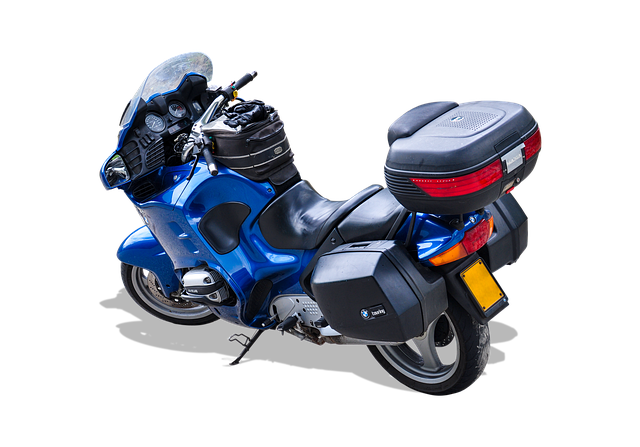Motorcycle batteries have seen a transformative shift with the advent of lithium technology, outpacing traditional lead-acid options. Lead-acid batteries, traditionally valued for their reliability and affordability, consist of lead plates submerged in sulfuric acid, delivering energy through charge cycles that form hydrogen sulfate and lead sulfate. Despite their robustness and established track record, they are often bulkier, demand regular upkeep, and have a shorter lifespan than lithium alternatives. Lithium batteries, including Li-ion and LiFePO4 types, offer significant improvements with their reduced weight, higher energy density, extended cycle life, and safer design, which avoids the use of sulfuric acid and hazardous materials. These benefits, along with their ability to function well across a wide range of temperatures, make them a preferred choice for riders who value durability, longevity, and environmental considerations. While lithium batteries initially cost more, their long-term performance can lead to overall savings. Considering the decision between lead-acid and lithium batteries, factors such as weight, maintenance needs, lifespan, environmental impact, and budget should be weighed to choose the most suitable option for your riding style and preferences. Both battery types have distinct advantages: lead-acid batteries offer practicality with their cost-effectiveness and resilience to temperature extremes, while lithium batteries are at the forefront of innovation with their eco-friendly design and high performance. As costs decrease and technology advances, lithium batteries are likely to become the default choice for motorcycle enthusiasts seeking a sustainable and efficient power source.
When revving up your motorcycle, the power to ignite the engine relies on a key component: the battery. The choice between lead-acid and lithium batteries significantly influences a ride’s performance and longevity. This article delves into the critical aspects of motorcycle battery technologies, highlighting their respective advantages, energy efficiency, cost implications, maintenance needs, and environmental impacts. From durability to charging technology, and safety to future trends, discerning riders can make an informed decision on which battery best suits their mechanical steed. Understanding the nuances between lead-acid and lithium batteries is pivotal for optimizing your motorcycle’s power output and ensuring a seamless ride.
- Understanding Motorcycle Battery Technologies: Lead-Acid vs. Lithium
- The Advantages of Lead-Acid Batteries for Motorcycles
- Durability and Performance: A Closer Look at Lead-Acid Batteries
- The Emergence of Lithium Batteries in the Motorcycle Sector
Understanding Motorcycle Battery Technologies: Lead-Acid vs. Lithium

When evaluating motorcycle battery technologies, it’s crucial to understand the differences between traditional lead-acid and modern lithium options. Lead-acid batteries have been the mainstay for powering motorcycles due to their reliability, affordability, and established track record. These batteries consist of a lead plate submerged in a sulfuric acid solution; when charged, hydrogen sulfate forms on the positive plate and lead sulfate on the negative. While effective, they are typically heavier and require more maintenance than their lithium counterparts. They also have a shorter lifespan, with a deep discharge potentially shortening their serviceable life.
On the other hand, lithium batteries represent the evolution of motorcycle battery technology. These batteries offer a lighter weight, higher energy density, and greater cycle life compared to traditional lead-acid cells. Lithium-ion (Li-ion) and lithium-iron phosphate (LiFePO4) are popular choices within this category. They do not contain toxic sulfuric acid and are designed with fewer hazardous materials. This makes them safer for the environment and more user-friendly in terms of maintenance. Additionally, their ability to maintain a charge at a wider range of temperatures can be particularly advantageous for riders who venture out in diverse climates. Lithium batteries are often more expensive upfront but can provide long-term savings through their durability and longevity. When selecting between lead-acid and lithium batteries for a motorcycle, consider factors such as weight, maintenance requirements, lifespan, environmental impact, and budget to make an informed decision that aligns with your specific needs and preferences.
The Advantages of Lead-Acid Batteries for Motorcycles

Lead-acid batteries have long been the preferred choice for powering motorcycles due to their reliability and proven track record. These batteries are robust and offer a consistent performance that is well-suited to the demands of motorcycle operation. One of the primary advantages of lead-acid batteries is their affordability; they represent a cost-effective solution for riders who prioritize value without compromising on quality. Additionally, lead-acid batteries are known for their resilience in various temperature conditions, ensuring that your motorcycle starts reliably regardless of the weather. Their ability to withstand frequent charge and discharge cycles makes them ideal for the intermittent use typical of motorcycling, where the battery might not be used for extended periods between rides. The lead-acid design also allows for a straightforward recycling process, contributing to a more sustainable approach to energy storage in the automotive sector. Overall, the combination of cost-effectiveness, reliability in diverse environmental conditions, and longevity makes lead-acid batteries an excellent choice for motorcycle applications.
Durability and Performance: A Closer Look at Lead-Acid Batteries

Lead-acid batteries have been a mainstay in powering various applications, including motorcycle batteries, due to their proven durability and performance track record. These batteries are constructed using a tried-and-true design consisting of lead plates submerged in a sulfuric acid electrolyte solution. This combination allows them to deliver a reliable energy output, making them a go-to choice for many motorcycle enthusiasts who value consistency and longevity. The robustness of lead-acid batteries is evident in their ability to withstand a wide range of operating temperatures, ensuring that they remain functional even under harsh environmental conditions. Additionally, the maturity of this technology means that it benefits from extensive research and development, leading to continuous improvements in efficiency, lifespan, and charge retention. For those prioritizing reliability and familiarity, lead-acid batteries, particularly as motorcycle batteries, represent a dependable option that has consistently met the demands of users across various applications for decades.
While lead-acid batteries offer robust performance and proven durability, it’s important to recognize their characteristics in the context of motorcycle use. These batteries are typically heavier than their lithium counterparts, which can affect a motorcycle’s handling and fuel efficiency. However, for applications where weight is less of a concern, lead-acid batteries provide a cost-effective solution with an established reputation for performance over time. Their ability to handle numerous charge-discharge cycles without significant loss in capacity makes them suitable for the frequent stops and starts associated with motorcycle riding. Moreover, their maintenance requirements are straightforward, with regular checks on the water level being all that’s needed to ensure optimal function. In summary, lead-acid batteries, especially when used as motorcycle batteries, offer a combination of reliability, accessibility, and performance that continues to serve many users well.
The Emergence of Lithium Batteries in the Motorcycle Sector

The motorcycle sector has witnessed a significant transformation with the emergence of lithium batteries as a preferred power source over traditional lead-acid options. Lithium batteries offer a remarkable improvement in terms of durability, efficiency, and performance for modern motorcycles. Their ability to deliver consistent energy output without suffering from the ‘memory effect’ associated with nickel-cadmium batteries makes them an ideal choice for riders who demand reliability and longevity from their motorcycle battery. Unlike lead-acid batteries that are heavy and require frequent maintenance, lithium batteries are lighter, have a higher energy density, and can be charged more frequently without compromising their lifespan. This shift towards lithium technology in the motorcycle industry is not just about performance; it’s also a response to the growing need for eco-friendly solutions. Lithium batteries provide a more environmentally sustainable option due to their longer life and reduced toxicity compared to lead-acid equivalents, aligning with global environmental concerns and regulations. As manufacturers continue to innovate, lithium batteries are expected to become increasingly cost-competitive with their lead-acid counterparts, further solidifying their position in the motorcycle battery market.
When selecting a motorcycle battery, discerning riders recognize the importance of balancing performance with reliability. Lead-acid batteries offer a proven track record of durability and dependability, making them a preferred choice for many motorcyclists. Their robustness in diverse conditions and affordability provide a compelling value proposition. On the other hand, the emergence of lithium batteries introduces an array of benefits, including lighter weight and higher energy density, which can enhance the overall riding experience. Ultimately, the choice between lead-acid and lithium batteries for motorcycles depends on individual needs, preferences, and budgets. Users should weigh these factors carefully to select a battery that aligns with their specific requirements and intended usage. Both technologies have distinct advantages, and understanding them thoroughly is key to making an informed decision regarding your motorcycle’s power source.
